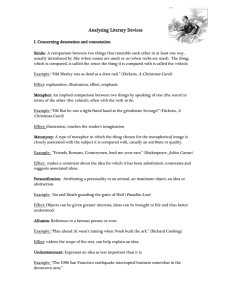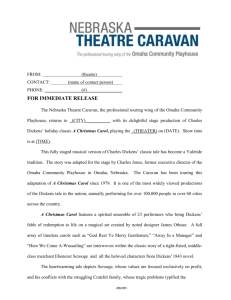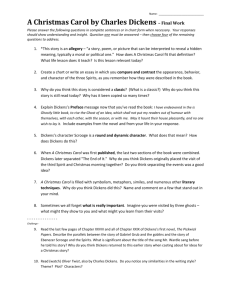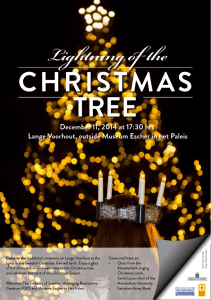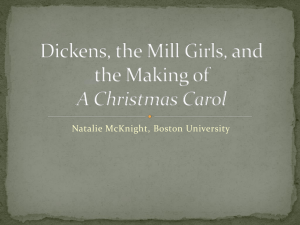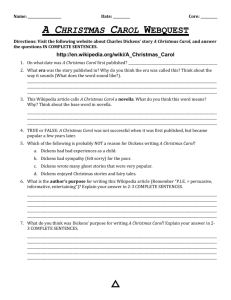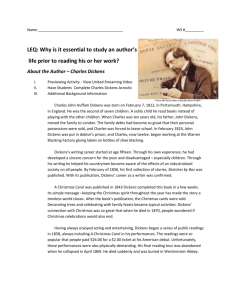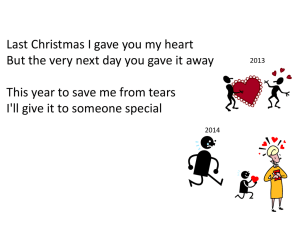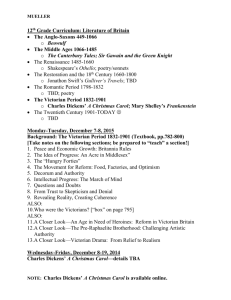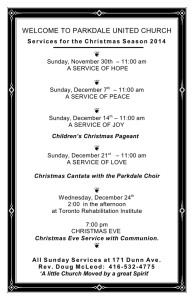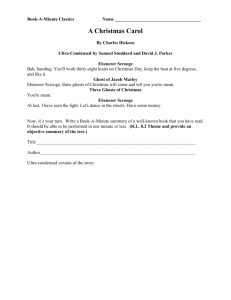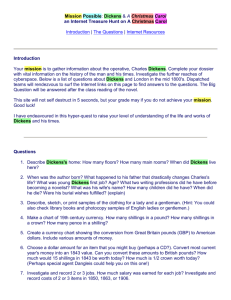A Christmas Carol- Charles Dickens
advertisement
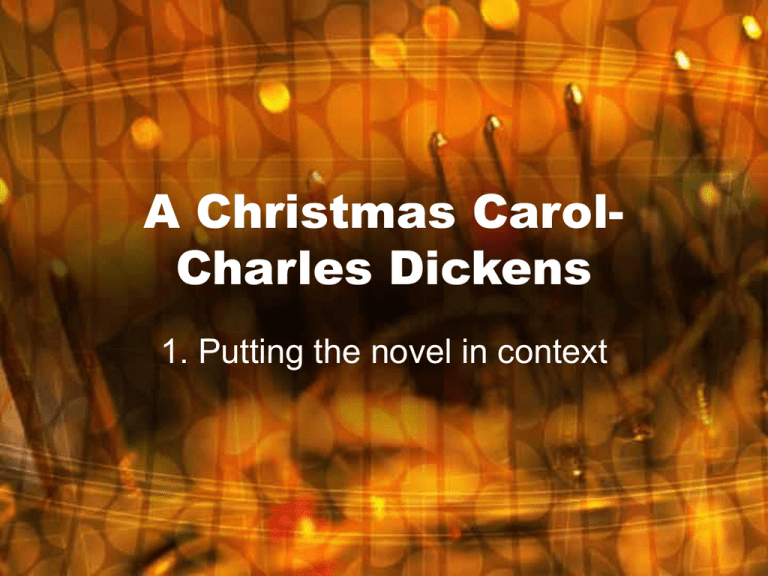
A Christmas CarolCharles Dickens 1. Putting the novel in context A Christmas Carol • A Christmas Carol in Prose, Being a Ghost Story of Christmas (commonly known as A Christmas Carol) is a novella by Charles Dickens • First published on December 19, 1843 • The story was an instant success, selling over six thousand copies in one week, and the tale has become one of the most popular and enduring Christmas stories of all time. • A Christmas Carol was written during a time of decline in the old Christmas traditions • "If Christmas, with its ancient and hospitable customs, its social and charitable observances, were in danger of decay, this is the book that would give them a new lease", said English poet Thomas Hood • A Christmas Carol is a Victorian morality tale of an old and bitter miser, Ebenezer Scrooge, who undergoes a profound experience of redemption over the course of one night. • Mr. Scrooge is a financier/money-changer who has devoted his life to the accumulation of wealth. He holds anything other than money in contempt, including friendship, love and the Christmas season. Major themes • The story deals with two of Dickens' recurrent themes, social injustice and poverty. • Dickens wrote in the wake of British government changes to the welfare system known as the Poor Laws, changes which required among other things, welfare applicants to "work" on treadmills, as Scrooge points out. • Scrooge embodies selfishness and indifference to the poor. Dickens' reading • A Christmas Carol was the subject of Dickens' first ever public reading, given in Birmingham Town Hall to the Industrial and Literary Institute on 27 December 1852. • This was repeated three days later to an audience of 'working people', and was a great success by his own account and that of newspapers of the time. • Over the years Dickens edited the piece down and adapted it for a listening, rather than reading, audience. Excerpts from A Christmas Carol remained part of Dickens' public readings until his death. Early Nineteenth-Century London • London was a world city that awed visitors with its size and its squalor, its grandeur and its filth. • Victorian London was the largest, most spectacular city in the world. • In 1800 the population of London was around a million souls. That number would swell to 4.5 million by 1880. • In his excellent biography, Dickens, Peter Ackroyd notes that "If a late twentiethcentury person were suddenly to find himself in a tavern or house of the period, he would be literally sick - sick with the smells, sick with the food, sick with the atmosphere around him". • Rich and poor people lived very close to each other because the city was crammed with people. • Thousands of horse-drawn vehicles clutter the roads and street sweepers have tons of manure to clean up. • Many houses burned coal for heat and cooking and this means the air is always full of soot. • Raw sewage flows through open drains in the streets into the river. • Pick-pockets, prostitutes, drunks, beggars, and vagabonds fill the streets. • People don’t wash a lot. They don’t wash their clothes. The smell is unbearable. • At night main streets are lit by gas lamps. Side streets and alleys are not lit at all. • Many houses are lit by candles or a small gas lamp. • People drank water out of the Thames. The same river into which the sewage ran. • Many people caught cholera and the whole city stunk, until 1875 when proper sewers were built. • In wet weather straw was scattered in walkways, storefronts, and in carriages to try to soak up the mud and wet. • Before 1834 the church was responsible for the poor. • After this workhouses were built. Many families worked and lived here. It was very badly paid with long hours and a high chance of disease and death. Plenary: • List 1 fact about the novella ‘A christmas Carol’ • List 3 things that you have learnt about life in nineteenth century England.
